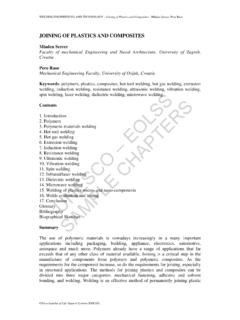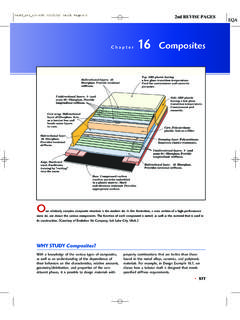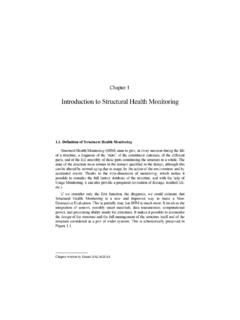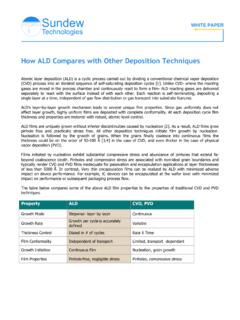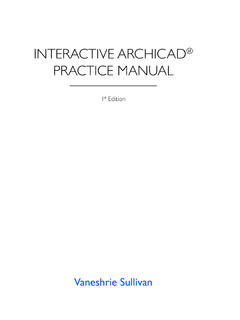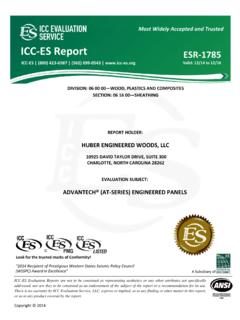Transcription of Poco Graphite, Inc. Properties and Characteristics …
1 Edited by R. G. Sheppard, Dwayne Morgan, D. M. Mathes, D. J. BrayFifth Printing February 20021987 Poco graphite , graphite , Old Greenwood , TX or recording of any part of this book is strictly prohibited without the express written consent of the copyright holder. Text, tables, diagrams,or other material may not be copied by facsimile, enlargement, or reduction; microfilmed; nor reproduced on slides, or by other means or graphite , and Characteristics of GraphiteFor the EDM IndustryPREFACEPoco graphite manufacturers a complete family of graphite materials for EDM applications. The physical Properties and Characteristics of the grades vary by particle size, microstructure consistency, flexural strength, density, and hardness.
2 Many EDMers know these Properties are important, but they may not understand the specific effect each of these Properties has on the graphite s performance as an EDM electrode. These differencesin performance account for the array of EDM graphite grades available. Each is tailored to function at the level ofperformance required by a specific purpose of the primer is to introduce the reader to graphite Properties and testing techniques so that theunique attributes of POCO become more apparent. graphite Properties and testing have always been a prime con-cern of Poco graphite . In order to maintain the quality of POCO materials and develop new grades to meet spe-cific criteria, POCO maintains an extensive testing laboratory.
3 POCO personnel have been active in the develop-ment of ASTM standards for graphite testing. Over the years POCO has accumulated data on manufacturedgraphites, POCO materials as well as competitive materials. This data was used to produce the information in with the right graphite electrode material for the application is important to the profitability of the job. Theappropriate material lasts longer and can be machined without breaking, keeping graphite replacement costs the right graphite / work metal combination will allow the job to be run at the most productive speed. To selectthe best graphite for a particular job, operators must become familiar with graphite classification and understandhow the graphite s Properties influence its performance and s is dedicated to manufacturing graphites that have unique Properties that are superior to other manufactured graphites.
4 These are the class of materials upon which POCO has built its reputation for producingthe best graphite in the or recording of any part of this book is strictly prohibited without the express written consent of the copyright holder. Text, tables, diagrams,or other material may not be copied by facsimile, enlargement, or reduction; microfilmed; nor reproduced on slides, or by other means or and Characteristics of GraphiteTABLE OFCONTENTS page Preface i Table of Contents iii Chapter1 Structure and Isotropy Apparent Density Porosity 4 Hardness 5 Compressive Strength 6 Flexural Strength 7 Tensile Strength 8 Modulus of Elasticity 9 Electrical Resistivity 10 Thermal Expansion 11 Thermal Conductivity 12 Thermal Shock 13 Specific Heat 14 Emissivity 15 Ash 16 Oxidation A Conversion Factors B POCO Laboratory Instructions C or recording of any part of this
5 Book is strictly prohibited without the express written consent of the copyright holder. Text, tables, diagrams,or other material may not be copied by facsimile, enlargement, or reduction; microfilmed; nor reproduced on slides, or by other means or and Characteristics of GraphiteReproduction or recording of any part of this book is strictly prohibited without the express written consent of the copyright holder. Text, tables, diagrams,or other material may not be copied by facsimile, enlargement, or reduction; microfilmed; nor reproduced on slides, or by other means or and Characteristics of GraphiteDefinitionCarbon, The ElementCarbon is the 6thelement on the Periodic Chart and can be found in abundance in the sun, stars, comets, andatmospheres of most is a Group 14 element (on older Periodic Charts,Group IVA) along with Silicon, Germanium, Tin, and Lead.
6 (Figure 1-1) Carbon is distributed very widely in 1961 the International Union of Pure and AppliedChemistry (IUPAC) adopted the isotope 12C as the basis for atomic weights. Carbon-14, 14C, an isotope with a half-life of 5730 years, is used to date such materials aswood, archeological specimens, etc. Carbon-13, 13C, is particularly useful for isotopic labeling studies since it is notradioactive, but has a spin I = 1/2nucleus and therefore agood NMR has four electrons in its valence shell (outer-shell). The electron configuration in carbon is this energy shell can hold eight electrons, each carbonatom can share electrons with up to four different electronic configuration gives carbon its unique set ofproperties (Table 1-1).
7 Carbon can combine with other elements as well as with itself. This allows carbon to formmany different compounds of varying size and is present as carbon dioxide in the atmosphereand dissolved in all natural waters. It is a component ofrocks as carbonates of calcium (limestone), magnesium,and iron. Coal, petroleum, and natural gas are chiefly hydro-carbons. Carbon is unique among the elements in the vastnumber of variety of compounds it can form. Organic chem-istry is the study of carbon and its history of manufactured graphite began at the end of the 19thcentury with a surge in carbon manufacturingtechnologies. The use of the electrical resistance furnace tomanufacture synthetic graphite led to the development of manufactured forms of carbon in the early part of the 20thcentury and more recently, to a wide variety of high performance materials such as carbon fibers and composites (Figure 1-2).
8 Chapter 1 Structure & IsotropyCarbon is found in many different compounds and is the basis for many materials. It is in the food you eat, the clothes you wear, the cosmetics you use and the gasoline that fuels your car. In addition, carbon is avery special element because it plays a dominant role in the chemistry of life. Carbon as charcoal, soot andcoal has been used since prehistoric times. Carbon as diamond has also been known since very ancient modern times, it has been determined that soot (amorphous carbon), graphite (another form of carbon) anddiamond are all forms of carbon. This book will focus on the Properties and Characteristics of one of the mostimportant forms of carbon :Carbon Symbol:C Atomic Number:6 Atomic amu Melting F Boiling C F Number of Protons/Electrons:6 Number of Neutrons:6, 7, 8 Classification:Non-Metal Crystal Structure:HexagonalCubic Density @ 293 K: graphite g/cm3 Diamond g/cm3 Color:Black, gray Figure 1-1.
9 Carbon as on the periodic chartTable 1-1. Properties of the element carbonReproduction or recording of any part of this book is strictly prohibited without the express written consent of the copyright holder. Text, tables, diagrams,or other material may not be copied by facsimile, enlargement, or reduction; microfilmed; nor reproduced on slides, or by other means or and Characteristics of GraphiteForms of CarbonCarbon is found free in nature in three allotropic forms:amorphous carbon, graphite , and diamond. More recently, a fourth form of carbon, buckminster fullerene, C60, hasbeen discovered. This new form of carbon is the subject ofgreat interest in research laboratories alone forms the familiar substances graphite anddiamond.
10 Both are made only of carbon atoms. graphite isvery soft and slippery, while diamond is one of the hardestsubstances known to man. Carbon, as microscopic dia-monds, is found in some meteorites. Natural diamonds arefound in ancient volcanic pipes such as those in SouthAfrica. If both graphite and diamond are made only of carbonatoms what gives them different Properties ? The answer liesin the way the carbon atoms form bonds with each forces within and between crystallites determine theextreme difference in Properties between these two diamond, the crystal structure is face-centered cubic(Figure 1-3). The interatomic distance is with eachatom covalently bonded to four other carbons in the form ofa tetrahedron.



